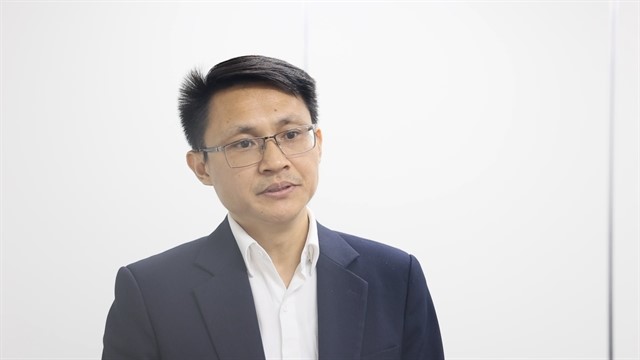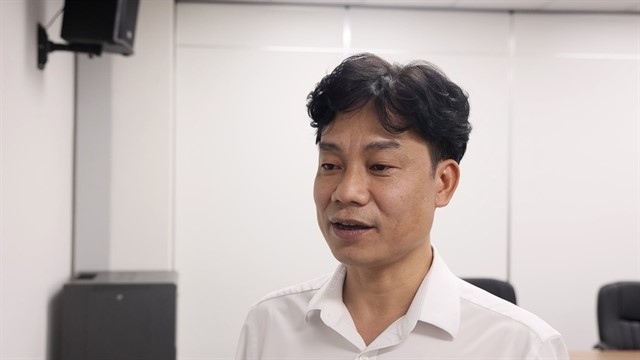Việt Nam News reporter Ly Ly Cao spoke to insiders from the National Innovation Centre (NIC), FPT University and Viettel to get more insightful opinions about the matter.

Việt Nam is seeing a very great opportunity to drive and develop the semiconductor industry, with the presence of global tech conglomerates and international capital influx.
As a result, demand for high-quality employees is high, but it remains a challenge for the industry due to numerous factors. Việt Nam News reporter Ly Ly Cao spoke to insiders from the National Innovation Centre (NIC), FPT University and Viettel to get more insightful opinions about the matter.
What advantages does Việt Nam possess in terms of human resources for the industry?

Võ Xuân Hoài, deputy director of the National Innovation Centre (NIC): Việt Nam’s current advantage lies in its young population and the remarkably high enrolment rate, around 29 per cent, in the STEM major (Science, Technology, Engineering and Mathematics).
Even though this rate still falls short of the levels seen in larger countries with well-developed science and technology industries, such as Germany, the US or Singapore, we do have a sizable pool of workers.
Việt Nam’s semiconductor industry comprises over 40 enterprises. Of these, approximately 40 companies are focused on design, while more than 10 enterprises are involved in packaging, testing and production processes. The design segment alone employs a workforce of nearly 6,000 engineers, and the engineering teams across the other segments total around 10,000.

Dr. Lê Trường Tùng, president of FPT University: We have a huge population, ranking 3rd in the Southeast Asia region and 15th in the world. And more importantly, Vietnamese people demonstrate a remarkable aptitude for learning, with an exceptional ability to quickly pick up new skills and knowledge. This is a significant strength they possess.
What are the difficulties that Việt Nam faces in cultivating a workforce for the country’s semiconductor industry?
Võ Xuân Hoài: The biggest challenge in developing human resources for the semiconductor industry, I believe, is, first, an insufficient number of qualified lecturers and instructors. To build up the required human resource base, we must prioritise training and developing this pool of teaching staff.
Additionally, we currently lack specialised support policies to assist learners who choose to pursue education and training in the semiconductor industry. As a relatively new and technically complex field, entering this industry is not easy for students. We therefore need to establish government-backed support systems covering tuition, scholarships and tailored training programmes.
Finally, Việt Nam’s semiconductor education programmes do not yet meet international standards. The semiconductor industry encompasses a wide range of disciplines, from design and packaging to testing and production, including materials science. To produce students and engineers of global calibre, we must urgently update our curricula to align with internationally recognised training standards.
Dr. Lê Trường Tùng: The key challenges in developing human resources for the industry are scaling up the training scale, compressing the training timeline and ensuring international standards are met.
We need to rapidly scale up the training capacity to meet the massive demand for semiconductor talent. The semiconductor industry is rapidly growing, requiring Việt Nam to produce a large number of qualified engineers and technicians in a short time.
Meanwhile, the training timeline is extremely compressed, with a maximum of only three years to provide the necessary skills and knowledge. This puts significant pressure on the training system to accelerate the curriculum and quickly produce job-ready graduates.
And these human resources must be trained to international standards, as they will be expected to work and compete in the global semiconductor industry. The training programmes in the country need to align with global best practices to ensure the graduates can seamlessly integrate into the global semiconductor ecosystem.
How can we encourage students to pursue jobs in the industry?

Nguyễn Trung Kiên, deputy director of Viettel Semiconductor Technology Division: From the very beginning of the division's establishment, our semiconductor-related divisions have actively encouraged and supported students. As early as their third or fourth year of university, students can come to our company to get familiar with and start using the latest chip design tools and technologies.
This programme has been in place for 6-7 years now, allowing us to engage with and develop semiconductor talent at an early stage in their academic careers. By providing this kind of hands-on experience and exposure to the industry, we aim to better prepare the next generation of engineers and designers for the realities of working in the fast-paced semiconductor field.
While we have been successful in attracting and training young talent through our student internship programme, retaining these skilled individuals poses some difficulties for us. There are a few key factors at play.
Firstly, it's crucial that the interns we bring on can demonstrate the right fit and capabilities to meet our specific business needs. We have high standards when it comes to the technical and practical skills required in our semiconductor operations. Ensuring a strong alignment between the students' competencies and our requirements is an important consideration in retention.
Secondly, the job market for semiconductor and chip design talent in Việt Nam has become highly competitive in recent years. Many of the top students we work with are highly sought after, not just by Viettel, but by other leading technology companies as well. This intense competition makes it challenging to hold on to all the interns we train, despite our best efforts.
Võ Xuân Hoài: We have determined to focus our investment on four national-level shared semiconductor laboratories so that universities, students and lecturers have the opportunity to go there to experiment, test and practise.

These laboratories are located in the NIC with an investment of VNĐ1 trillion (US$39.7 million), Vietnam National University, Hanoi (VNĐ1.5 trillion), Vietnam National University, HCM City (VNĐ2 trillion), and Đà Nẵng City (VNĐ430 billion).
At the same time, we will also invest in an additional 18 standard laboratories in universities, based on surveys and assessments.
And students and future engineers must be offered clear prospects of excellent job opportunities and high salaries for them to pursue a career in the industry.
In my view, engaging various stakeholders, especially the government, academia and businesses, including foreign investors, is crucial for the development of the country’s semiconductor industry. This should be done not just at the local level, but across the nation, in cities and at the regional scale. — VNS





